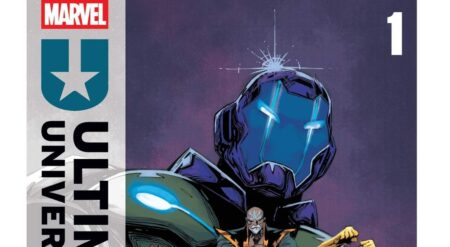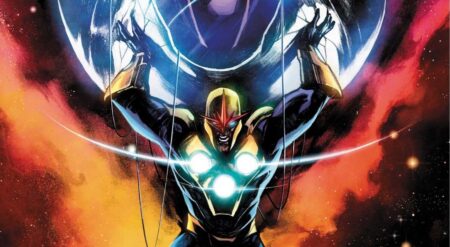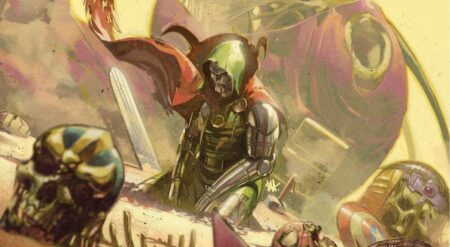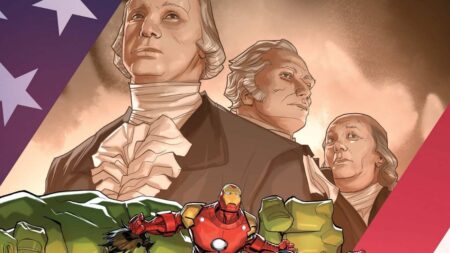
Shang-Chi #3 is written by Gene Luen Yang, illustrated by Dike Ruan and Philip Tan, colored by Sebastian Cheung, and lettered by VC’s Travis Lanham. It is published by Marvel Comics. After the events of the previous issue, Shang-Chi struggles to connect with his siblings Sister Dagger and Brother Sabre as they attempt to halt Sister Hammer’s takeover of the Five Weapons Society. To make matters worse, the Master of Kung-Fu is suffering from a wound that is slowly transforming him into a jiangshi (zombie).
In this issue, the creative team fully delves into Shang’s separation from his siblings and how that affects his interactions with them. Brother Sabre is jovial toward him, Sister Dagger is cold and unforgiving, and Sister Hammer is utterly relentless. It also doesn’t help that they were trained by his father Zheng Zhu to be the most lethal combatants on Earth and covet leadership over the Five Weapons Society.
Yet we also see that Shang genuinely wants to connect with his siblings. Yang’s script paints these characters as actual human beings first and foremost. Sure they happen to be human beings with immense martial arts skills, but they bicker like real siblings and they come to each other’s aid like real siblings. It’s the human touch that has drawn me to Marvel’s heroes and Shang-Chi is no exception.
Tan, Ruan, and Cheung also juxtapose the difference between Shang and his father with their artwork. Tan returns to illustrate the flashback section of the book and it is brutal. Heads fly, bones break, and an all-out war breaks out in Peking. The audience also sees just how horrible Zheng Zhu is. There’s a twist concerning him and his late brother that I won’t spoil. but readers will come away thinking “Shang-Chi is RELATED to this guy?!”
Ruan illustrates the rest of the book, and he gets the chance to finally draw Shang in his new outfit. It has a bright red and green color scheme, alongside golden dragon scales. Shang has mostly stuck to red and black outfits over the course of his comic history, but this is the first time he’s had something close to a superhero costume. Special thanks goes to artist Jim Cheung, who designed Shang’s new outfit; I wouldn’t be surprised if Simu Liu sports a similar outfit in Shang-Chi and the Legend of the Ten Rings.
Finally, Cheung perfectly divides past and present with his color scheme. The scenes set in the past have a darker hue, complimenting the brutal fights on screen. In the present, the colors are brighter and more eye-grabbing, especially when it comes to Shang and his siblings. Each of them has a different color for their uniforms, which combined with their unique fighting styles makes for striking combat sequences.
Shang-Chi #3 features an extremely messed up family reunion, as the Master of Kung Fu duels with his siblings and the threat of the undead. With only two issues left, Shang is shaping up to have the fight of his life.
Shang-Chi #3 is available wherever comics are sold.
Shang-Chi #3
TL;DR
Shang-Chi #3 features an extremely messed up family reunion, as the Master of Kung Fu duels with his siblings and the threat of the undead. With only two issues left, Shang is shaping up to have the fight of his life.







